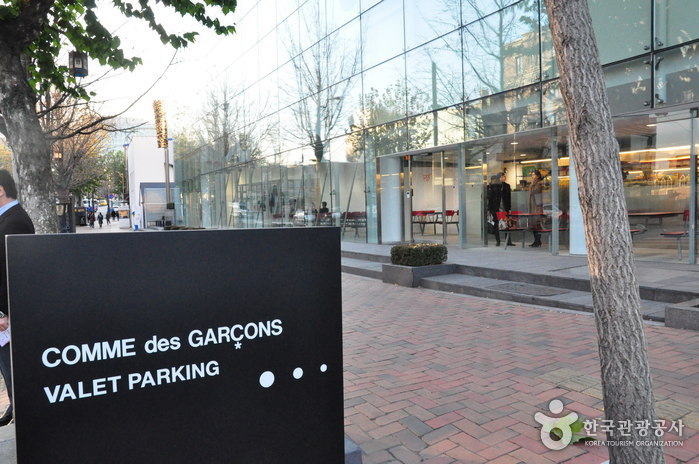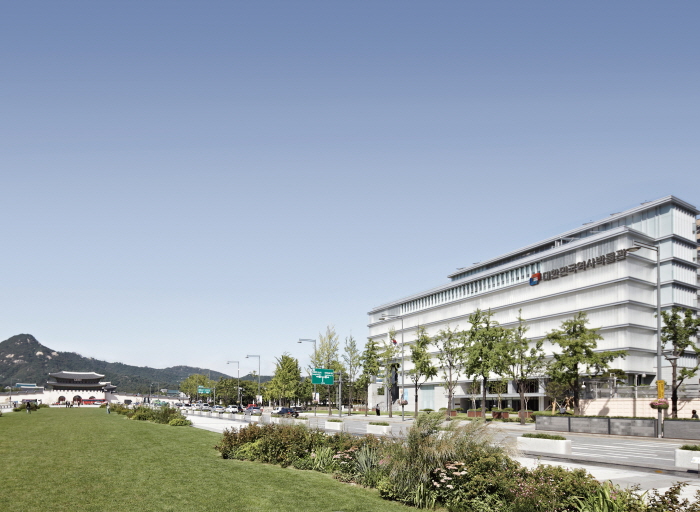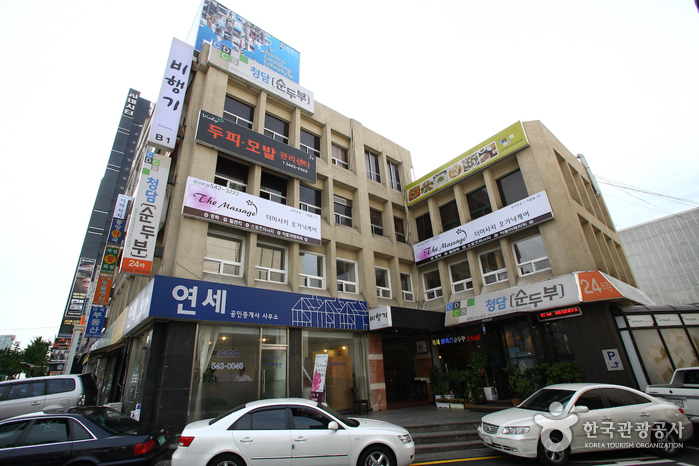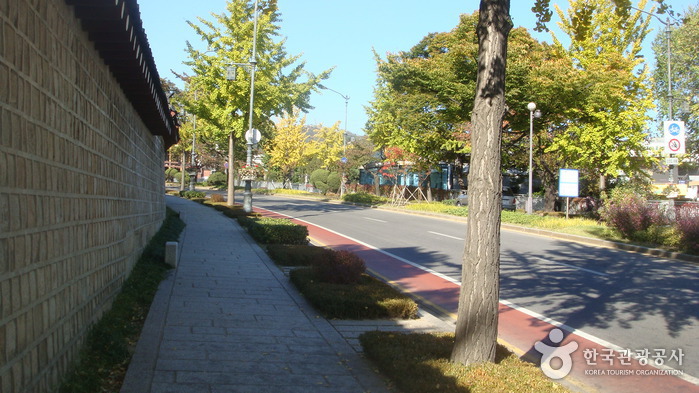Babi Line Clinic [Tax Refund Shop] (바비라인 성형외과)
16.8Km 2024-04-18
12F, 134, Dosan-daero, Gangnam-gu, Seoul
-
PR Plastic Surgery [Tax Refund Shop] (PR 성형외과의원)
16.8Km 2024-06-26
13F, 134, Dosan-daero, Gangnam-gu, Seoul
-
Namhansanseong Provincial Park [UNESCO World Heritage] (남한산성도립공원 [유네스코 세계문화유산])
16.8Km 2024-02-29
731 Namhansanseong-ro, Namhansanseong-myeon, Gwangju-si, Gyeonggi-do
+82-31-746-1088
Namhansanseong was a fortress that protected the southern approaches to the capital during the Baekje kingdom (18 B.C. – 660 A.D.) and the Joseon dynasty (1392-1897). During the Qing invasion of Joseon in 1636, King Injo of Joseon (reigned 1623-1649) sought refuge here and constructed Haenggung, a temporary palace. Subsequently, it became the administrative center of the Gwangju region, and today, it is a site where many cultural properties are preserved.
Comme des Garçons (꼼데가르송)
16.8Km 2021-06-19
261, Itaewon-ro, Yongsan-gu, Seoul
+82-2-749-1153
Located in Hannam-dong, Seoul, the local flagship store of Japanese avant-garde brand Comme des Garçons is not simply a fashion brand outlet but rather a cultural complex introducing Comme des Garçons’s brand philosophy and values. Comme des Garçons, meaning “like a boy” in French, believes “women should be able to dress like a boy forever.” The flagship store introduces the total lifestyle of Comme des Garçons from fashion to perfume and art to food. The six-story building has a unique tunnel-like structure consisting of five fashion areas and over a dozen product lines on display. In addition to the store, art space “Gallery Six” and the French-inspired "Rose Bakery" keep visitors entertained.
National Museum of Korean Contemporary History (대한민국역사박물관)
16.8Km 2022-12-27
198, Sejong-daero, Jongno-gu, Seoul
+82-2-3703-9200
The National Museum of Korean Contemporary History opened on December 26, 2012, and showcases Korea's modern history, from the opening of Incheon Port to current times. The museum provides an in-depth look at the changes in the nation through exhibitions and educational programs, as well as researching, developing, and collecting materials. The museum is comprised of four exhibition halls; Prelude to the Republic of Korea, Foundation of the Republic of Korea, Development of the Republic of Korea, and Modernization of South Korea, toward the World. In addition, the Korean History Dream Village features a hands-on program hall for children to learn modern and contemporary history. In addition to special exhibitions, the museum also offers educational and cultural programs for children.
Dami Porridge (다미죽)
16.8Km 2024-03-11
38, Myeongdong 10-gil, Jung-gu, Seoul
+82-2-777-5077
Located in Myeongdong Street, Dami Porridge focuses on porridge. Their delectable porridges are made with a variety of seafood including abalone as well as mushrooms. Porridge is easy to digest and full of nutrients, so it's recommended for when you're not feeling well.
Gwanghwamun Gate (광화문)
16.8Km 2024-12-04
161 Sajik-ro, Jongno-gu, Seoul
+82-2-3700-3900
Built in 1395 under the reign of King Taejo, the first king of the Joseon dynasty, Gwanghwamun Gate is the southern gate of Gyeongbokgung Palace. It is also the main gate of the palace, therefore larger and fancier in comparison to the other gates. Gwanghwamun Gate consists of three arched gates; the center gate was used by the king, while the other two were used by the crown prince and royal officials. The tall granite walls of the gate serve as a platform for the wooden gate tower that watches over the city. The gate has a sign with its name written at the top center of the gate tower.
Gwanghwamun Gate went through several damages and restorations over the course of history. It was first severely damaged during the Imjin War (1592-1598) and was not restored until the reconstruction of Gyeongbokgung Palace in 1864. Under the Japanese administration, the gate was demolished and relocated to the north of the palace's eastern gate, followed by series of damages during the Korean War (1950-1953). In 1968, Gwanghwamun Gate was relocated back to the south of the palace and was rebuilt using concrete; however, the gate’s position was shifted a few meters away from its original location. In 2006, a major reconstruction project took place to restore Gwanghwamun Gate to its original state and location, disassembling the structure completely and replacing concrete with granite and wood. After three years and eight months of construction, Gwanghwamun Gate was fully restored to its original form and was open to the public on August 15, 2010.
Garosu Therapy (Formerly, The Massage) (가로수테라피(구, 더마사지))
16.8Km 2017-07-22
4, Dosan-daero 11-gil, Gangnam-gu, Seoul
+82-2-546-3200
The Massage is a massage parlor, offering a variety of massage programs including sports massages, oil massages, and foot massages. All massage specialists at The Massage boast over 10 years of experience, and are conveniently ready to serve all your massage needs. As a special point of interest, they use organic products having no chemical preservatives to offer a fitted massage service depending on individuals’ body and health condition.
The Street in front of Cheongwadae (The Blue House) (청와대 앞길)
16.8Km 2020-03-21
Gungjeong-dong, Jongno-gu, Seoul
+82-2-120
The street in front of Cheongwadae (the Blue House) is open to the public and includes both Hyoja Samgeori (Hyoja three-way intersection) in Hyoja-dong and Palpan Samgeori (Palpan three-way inetersection) in Palpan-dong. When walking along Hyoja-ro Road from Gyeongbokgung Station, sights include a fountain, Mugunghwa Garden, Yeonmugwan Hall, and Daegogak & Yeongbingwan Hall.
Cheongwadae Sarangchae consists of one basement level and two above-ground levels, including Korean Culture Exhibition Hall, Planned Exhibition Hall, a gift shop, and rest area (Korean Food Promotion Hall, Café) on the first floor and Cheongwadae Hall and Haengboknuri Hall on the second floor. Daegogak Hall houses a book donated to former president, Kim Young-sam for expressing the past spirit of Sinmungo (Petitioner's drum from Korean History). Yeonmugwan Hall is a martial art and fitness center for guards. Mugunghwa Dongsan, formed after the ansa (Safe House) was demolished in 1993, includes a well, mock fortress, and rest area. Located behind Mugunghwa Dongsan is Apostolic Nunciature in Korea and Chilgung (Seven Palaces).
At the beginning of the street in front of Cheongwadae, dense trees and beautiful flower gardens decorating both sides of the road make it a nice place for taking a walk. The area from the north gate of Gyeongbokgung Palace, Chunchumun, to the main gate of Gyeongbokgung Palace, Geonchunmun, is Samcheongdong-gil Road. This road is home to many art galleries, including Kukje Gallery, Growrich Gallery, Gallery Hyundai, and Jin Art gallery, in the area of Hyoja-ro.
![Comme Des Garçons [Tax Refund Shop] (꼼데가르송)](http://tong.visitkorea.or.kr/cms/resource/81/2890181_image2_1.jpg)
![Babi Line Clinic [Tax Refund Shop] (바비라인 성형외과)](http://tong.visitkorea.or.kr/cms/resource/62/2879762_image2_1.jpg)
![PR Plastic Surgery [Tax Refund Shop] (PR 성형외과의원)](http://tong.visitkorea.or.kr/cms/resource/79/3313479_image2_1.jpg)
![Namhansanseong Provincial Park [UNESCO World Heritage] (남한산성도립공원 [유네스코 세계문화유산])](http://tong.visitkorea.or.kr/cms/resource/56/2612856_image2_1.jpg)




 English
English
 한국어
한국어 日本語
日本語 中文(简体)
中文(简体) Deutsch
Deutsch Français
Français Español
Español Русский
Русский